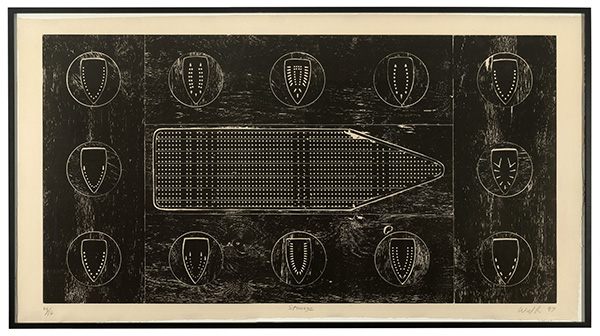REMIXING THE HALL: WCMA’S COLLECTION IN PERPETUAL TRANSITION
Williams College Museum of Art • Williamstown, MA • artmuseum.williams.edu • Through June, 2022

A trio of Williams College Museum of Art curators have collaborated closely to mine the museum’s encyclopedic collection to “remix” objects and their narratives—in a time of public health, social, and political challenges. Without direct access to the actual objects, Elizabeth Sandoval, Kevin Murphy and Horace Ballard (recently appointed associate curator of American art, Harvard Art Museums) have assembled a mind-tingling exhibition, Remixing the Hall: WCMA’s Collection in Perpetual Transition that displays a disparate yet representative array of objects in dialog with each other.
Cutting across place and time, culture and genre, the objects are loosely grouped under the overlapping themes of the visualization of power, transcendent states, the enduring sublimity of water, and hybridity. Since the exhibition centers around multiculturalism, it also advances the social justice actions delineated in the museum’s DEI (Diversity, Equity, Inclusion) Plan 2021–2023, implemented earlier this year.
For example, one wall devoted to a handful of evocations of the Madonna, a divine figure of transcendence, ranges from The Immaculate Conception, a 17th-century Spanish painting attributed to Juan de Sevilla, with its heavenly Mary encircled by angels, to Aminah Robinson’s Oh Mary, Don’t You Weep (1978), depicting a weary and worn Mary and the scrawled lyrics of an African-American spiritual.
One display features devotional objects from several religious traditions—Hinduism, Buddhism, Islam, Christianity and ancient Egyptian beliefs—used to instill transcendent states among the faithful. A 20th-century Qur’an Prayer Board stands alongside a 15th-century Christian Book of Hours. A small, gold Isis figure warded off evil and a bronze statuette of a Crowned Falcon signaled devotion and gratitude.
In the room devoted to the “sublimity of water” (to political philosopher Edmund Burke, “sublime” connoted terrifying experiences), William Morris Hunt’s painting takes onlookers to the dangerous edge of Niagara Falls. Yet it’s Willie Cole’s large woodcut Stowage (1997), which recalls the horrific trafficking of enslaved Africans, that presides over the space and resonates into our contested present.
The curators have chosen not to dictate the exhibition experience, presenting a loose interpretive framework. Thus, visitors have the opportunity to create meaning out of Remixing for themselves. The exhibition’s takeaway is the experience itself.
—Jack Curtis
